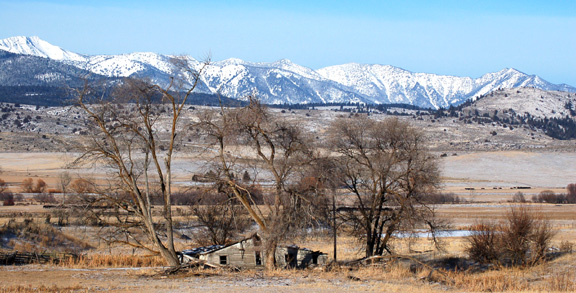Monday, October 5, 2009
Celebrating Slaughter
Celebrating Slaughter: War and Collective Amnesia
By Chris Hedges
http://www.truthdig.com/report/item/20091005_celebrating_slaughter_war_and_collective_amnesia/
"There is a burning need, one seen in the collective memory that has grown up around World War II and the Holocaust, to turn the horror of mass murder into a tribute to the triumph of the human spirit. The reality is too unpalatable. The human need to make sense of slaughter, to give it a grandeur it does not possess, permits the guilty to go free. The war makers—those who make the war but never pay the price of war—live among us. They pen thick memoirs that give sage advice. They are our elder statesmen, our war criminals. Henry Kissinger. Robert McNamara. Dick Cheney. George W. Bush. Any honest war memorial would have these statesmen hanging in effigy. Any honest democracy would place them behind bars."
October 05, 2009 "Truthdig" -- War memorials and museums are temples to the god of war. The hushed voices, the well-tended grass, the flapping of the flags allow us to ignore how and why our young died. They hide the futility and waste of war. They sanitize the savage instruments of death that turn young soldiers and Marines into killers, and small villages in Vietnam or Afghanistan or Iraq into hellish bonfires. There are no images in these memorials of men or women with their guts hanging out of their bellies, screaming pathetically for their mothers. We do not see mangled corpses being shoved in body bags. There are no sights of children burned beyond recognition or moaning in horrible pain. There are no blind and deformed wrecks of human beings limping through life. War, by the time it is collectively remembered, is glorified and heavily censored.
I blame our war memorials and museums, our popular war films and books, for the wars in Iraq and Afghanistan as much as George W. Bush. They provide the mental images and historical references to justify new conflicts. We equate Saddam Hussein with Adolf Hitler. We see al-Qaida as a representation of Nazi evil. We view ourselves as eternal liberators. These plastic representations of war reconfigure the past in light of the present. War memorials and romantic depictions of war are the social and moral props used to create the psychological conditions to wage new wars.
War memorials are quiet, still, reverential and tasteful. And, like church, such sanctuaries are important, but they allow us to forget that these men and women were used and often betrayed by those who led the nation into war. The memorials do not tell us that some always grow rich from large-scale human suffering. They do not explain that politicians play the great games of world power and stoke fear for their own advancement. They forget that young men and women in uniform are pawns in the hands of cynics, something Pat Tillman’s family sadly discovered. They do not expose the ignorance, raw ambition and greed that are the engine of war.
There is a burning need, one seen in the collective memory that has grown up around World War II and the Holocaust, to turn the horror of mass murder into a tribute to the triumph of the human spirit. The reality is too unpalatable. The human need to make sense of slaughter, to give it a grandeur it does not possess, permits the guilty to go free. The war makers—those who make the war but never pay the price of war—live among us. They pen thick memoirs that give sage advice. They are our elder statesmen, our war criminals. Henry Kissinger. Robert McNamara. Dick Cheney. George W. Bush. Any honest war memorial would have these statesmen hanging in effigy. Any honest democracy would place them behind bars.
Primo Levi, who survived Auschwitz, fought against the mendacity of collective memory until he took his own life. He railed against the human need to mask the truth of the Holocaust and war by giving it a false, moral narrative. He wrote that the contemporary history of the Third Reich could be “reread as a war against memory, an Orwellian falsification of memory, falsification of reality, negation of reality.” He wondered if “we who have returned” have “been able to understand and make others understand our experience.” He wrote of the Jewish collaborator Chaim Rumkowski, who ran the Lodz ghetto on behalf of the Nazis, that “we are all mirrored in Rumkowski, his ambiguity is ours, it is our second nature, we hybrids molded from clay and spirit. His fever is ours, the fever of Western civilization that ‘descends into hell with trumpets and drums.’ ” We, like Rumkowski, “come to terms with power, forgetting that we are all in the ghetto, that the ghetto is walled in, that outside the ghetto reign the lords of death, and that close by the train is waiting.” We are, Levi understood, perpetually imprisoned within the madness of self-destruction. The rage of Cindy Sheehan, who lost her son Casey in Iraq, is a rage Levi felt. But it is a rage most of us do not understand.
A war memorial that attempted to depict the reality of war would be too subversive. It would condemn us and our capacity for evil. It would show that the line between the victim and the victimizer is razor-thin, that human beings, when the restraints are cut, are intoxicated by mass killing, and that war, rather than being noble, heroic and glorious, obliterates all that is tender, decent and kind. It would tell us that the celebration of national greatness is the celebration of our technological capacity to kill. It would warn us that war is always morally depraved, that even in “good” wars such as World War II all can become war criminals. We dropped the atomic bomb on Hiroshima and Nagasaki. The Nazis ran the death camps. But this narrative of war is unsettling. It does not create a collective memory that serves the interests of those who wage war and permit us to wallow in self-exaltation.
There are times—World War II and the Serb assault on Bosnia would be examples—when a population is pushed into a war. There are times when a nation must ingest the poison of violence to survive. But this violence always deforms and maims those who use it. My uncle, who drank himself to death in a trailer in Maine, fought for four years in the South Pacific during World War II. He and the soldiers in his unit never bothered taking Japanese prisoners.
The detritus of war, the old cannons and artillery pieces rolled out to stand near memorials, were curious and alluring objects in my childhood. But these displays angered my father, a Presbyterian minister who was in North Africa as an Army sergeant during World War II. The lifeless, clean and neat displays of weapons and puppets in uniforms were being used, he said, to purge the reality of war. These memorials sanctified violence. They turned the instruments of violence—the tanks, machine guns, rifles and airplanes—into an aesthetic of death.
These memorials, while they pay homage to those who made “the ultimate sacrifice,” dignify slaughter. They perpetuate the old lie of honor and glory. They set the ground for the next inferno. The myth of war manufactures a collective memory that ennobles the next war. The intimate, personal experience of violence turns those who return from war into internal exiles. They cannot compete against the power of the myth. This collective memory saturates the culture, but it is “a tale told by an idiot, full of sound and fury, signifying nothing.”
Copyright © 2009 , L.L.C.
By Chris Hedges
http://www.truthdig.com/report/item/20091005_celebrating_slaughter_war_and_collective_amnesia/
"There is a burning need, one seen in the collective memory that has grown up around World War II and the Holocaust, to turn the horror of mass murder into a tribute to the triumph of the human spirit. The reality is too unpalatable. The human need to make sense of slaughter, to give it a grandeur it does not possess, permits the guilty to go free. The war makers—those who make the war but never pay the price of war—live among us. They pen thick memoirs that give sage advice. They are our elder statesmen, our war criminals. Henry Kissinger. Robert McNamara. Dick Cheney. George W. Bush. Any honest war memorial would have these statesmen hanging in effigy. Any honest democracy would place them behind bars."
October 05, 2009 "Truthdig" -- War memorials and museums are temples to the god of war. The hushed voices, the well-tended grass, the flapping of the flags allow us to ignore how and why our young died. They hide the futility and waste of war. They sanitize the savage instruments of death that turn young soldiers and Marines into killers, and small villages in Vietnam or Afghanistan or Iraq into hellish bonfires. There are no images in these memorials of men or women with their guts hanging out of their bellies, screaming pathetically for their mothers. We do not see mangled corpses being shoved in body bags. There are no sights of children burned beyond recognition or moaning in horrible pain. There are no blind and deformed wrecks of human beings limping through life. War, by the time it is collectively remembered, is glorified and heavily censored.
I blame our war memorials and museums, our popular war films and books, for the wars in Iraq and Afghanistan as much as George W. Bush. They provide the mental images and historical references to justify new conflicts. We equate Saddam Hussein with Adolf Hitler. We see al-Qaida as a representation of Nazi evil. We view ourselves as eternal liberators. These plastic representations of war reconfigure the past in light of the present. War memorials and romantic depictions of war are the social and moral props used to create the psychological conditions to wage new wars.
War memorials are quiet, still, reverential and tasteful. And, like church, such sanctuaries are important, but they allow us to forget that these men and women were used and often betrayed by those who led the nation into war. The memorials do not tell us that some always grow rich from large-scale human suffering. They do not explain that politicians play the great games of world power and stoke fear for their own advancement. They forget that young men and women in uniform are pawns in the hands of cynics, something Pat Tillman’s family sadly discovered. They do not expose the ignorance, raw ambition and greed that are the engine of war.
There is a burning need, one seen in the collective memory that has grown up around World War II and the Holocaust, to turn the horror of mass murder into a tribute to the triumph of the human spirit. The reality is too unpalatable. The human need to make sense of slaughter, to give it a grandeur it does not possess, permits the guilty to go free. The war makers—those who make the war but never pay the price of war—live among us. They pen thick memoirs that give sage advice. They are our elder statesmen, our war criminals. Henry Kissinger. Robert McNamara. Dick Cheney. George W. Bush. Any honest war memorial would have these statesmen hanging in effigy. Any honest democracy would place them behind bars.
Primo Levi, who survived Auschwitz, fought against the mendacity of collective memory until he took his own life. He railed against the human need to mask the truth of the Holocaust and war by giving it a false, moral narrative. He wrote that the contemporary history of the Third Reich could be “reread as a war against memory, an Orwellian falsification of memory, falsification of reality, negation of reality.” He wondered if “we who have returned” have “been able to understand and make others understand our experience.” He wrote of the Jewish collaborator Chaim Rumkowski, who ran the Lodz ghetto on behalf of the Nazis, that “we are all mirrored in Rumkowski, his ambiguity is ours, it is our second nature, we hybrids molded from clay and spirit. His fever is ours, the fever of Western civilization that ‘descends into hell with trumpets and drums.’ ” We, like Rumkowski, “come to terms with power, forgetting that we are all in the ghetto, that the ghetto is walled in, that outside the ghetto reign the lords of death, and that close by the train is waiting.” We are, Levi understood, perpetually imprisoned within the madness of self-destruction. The rage of Cindy Sheehan, who lost her son Casey in Iraq, is a rage Levi felt. But it is a rage most of us do not understand.
A war memorial that attempted to depict the reality of war would be too subversive. It would condemn us and our capacity for evil. It would show that the line between the victim and the victimizer is razor-thin, that human beings, when the restraints are cut, are intoxicated by mass killing, and that war, rather than being noble, heroic and glorious, obliterates all that is tender, decent and kind. It would tell us that the celebration of national greatness is the celebration of our technological capacity to kill. It would warn us that war is always morally depraved, that even in “good” wars such as World War II all can become war criminals. We dropped the atomic bomb on Hiroshima and Nagasaki. The Nazis ran the death camps. But this narrative of war is unsettling. It does not create a collective memory that serves the interests of those who wage war and permit us to wallow in self-exaltation.
There are times—World War II and the Serb assault on Bosnia would be examples—when a population is pushed into a war. There are times when a nation must ingest the poison of violence to survive. But this violence always deforms and maims those who use it. My uncle, who drank himself to death in a trailer in Maine, fought for four years in the South Pacific during World War II. He and the soldiers in his unit never bothered taking Japanese prisoners.
The detritus of war, the old cannons and artillery pieces rolled out to stand near memorials, were curious and alluring objects in my childhood. But these displays angered my father, a Presbyterian minister who was in North Africa as an Army sergeant during World War II. The lifeless, clean and neat displays of weapons and puppets in uniforms were being used, he said, to purge the reality of war. These memorials sanctified violence. They turned the instruments of violence—the tanks, machine guns, rifles and airplanes—into an aesthetic of death.
These memorials, while they pay homage to those who made “the ultimate sacrifice,” dignify slaughter. They perpetuate the old lie of honor and glory. They set the ground for the next inferno. The myth of war manufactures a collective memory that ennobles the next war. The intimate, personal experience of violence turns those who return from war into internal exiles. They cannot compete against the power of the myth. This collective memory saturates the culture, but it is “a tale told by an idiot, full of sound and fury, signifying nothing.”
Copyright © 2009 , L.L.C.
Subscribe to:
Post Comments (Atom)












No comments:
Post a Comment